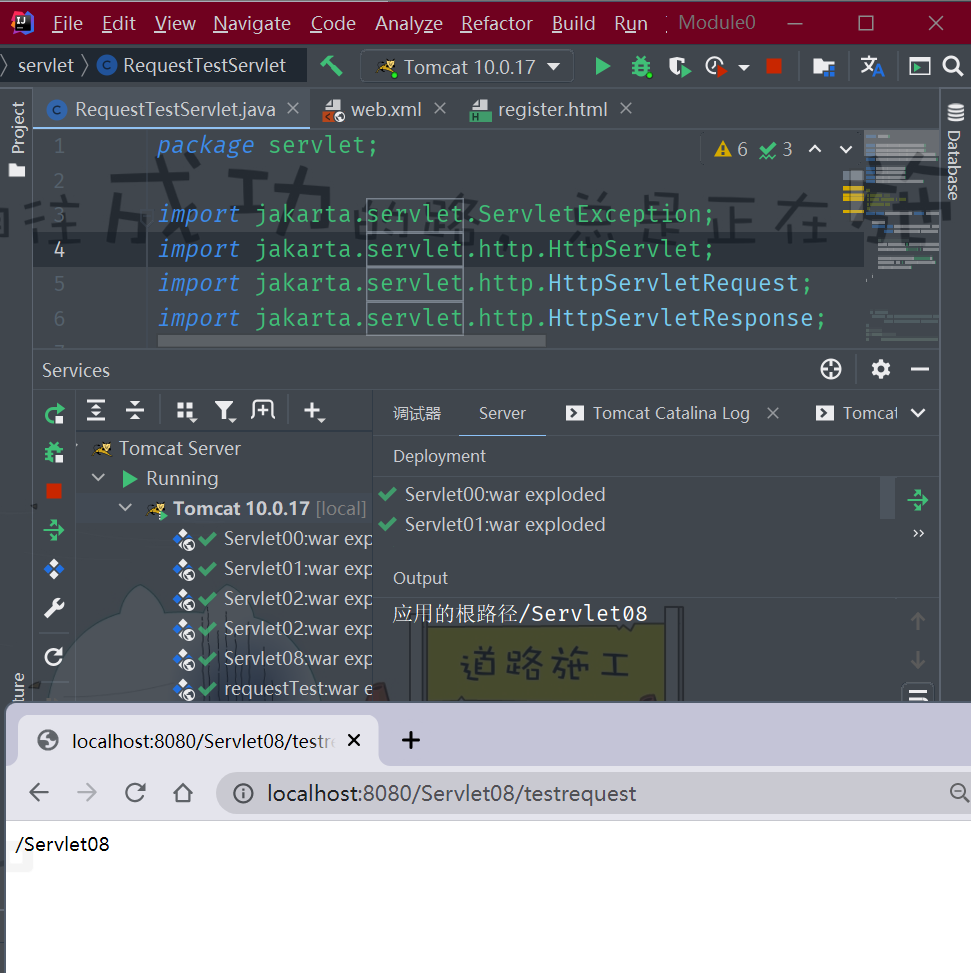获取用户的根路径
一、方法
✅
//这个方法用得比较多,动态获取应用的路径`String contextPath = request.getContextPath();``System.out.println("应用的根路径" + contextPath);`
二、实现
public class RequestTestServlet extends HttpServlet {@Overrideprotected void doGet(HttpServletRequest request, HttpServletResponse response)throws ServletException, IOException {//这个方法用得比较多,动态获取应用的路径String contextPath = request.getContextPath();System.out.println("应用的根路径" + contextPath);response.setContentType("text/html");PrintWriter out = response.getWriter();out.print(contextPath);}}
<?xml version="1.0" encoding="UTF-8"?><web-app xmlns="http://xmlns.jcp.org/xml/ns/javaee"xmlns:xsi="http://www.w3.org/2001/XMLSchema-instance"xsi:schemaLocation="http://xmlns.jcp.org/xml/ns/javaee http://xmlns.jcp.org/xml/ns/javaee/web-app_4_0.xsd"version="4.0"><servlet><servlet-name>RequestTestServlet</servlet-name><servlet-class>servlet.RequestTestServlet</servlet-class></servlet><servlet-mapping><servlet-name>RequestTestServlet</servlet-name><url-pattern>/testrequest</url-pattern></servlet-mapping></web-app>


